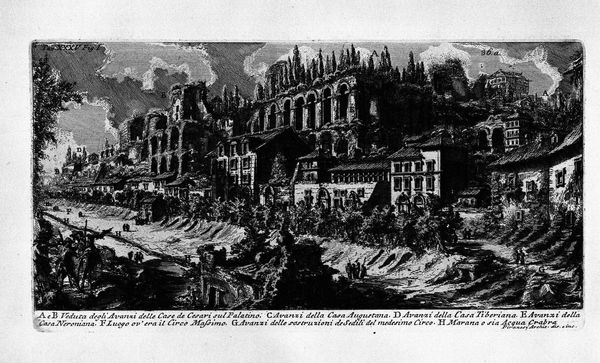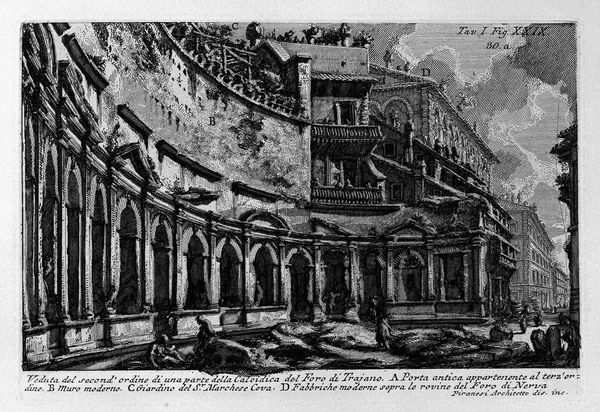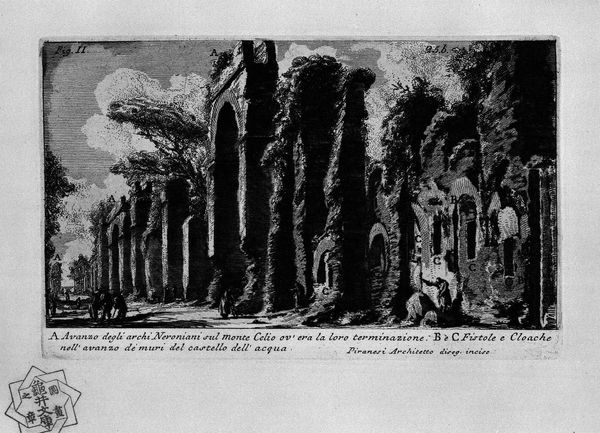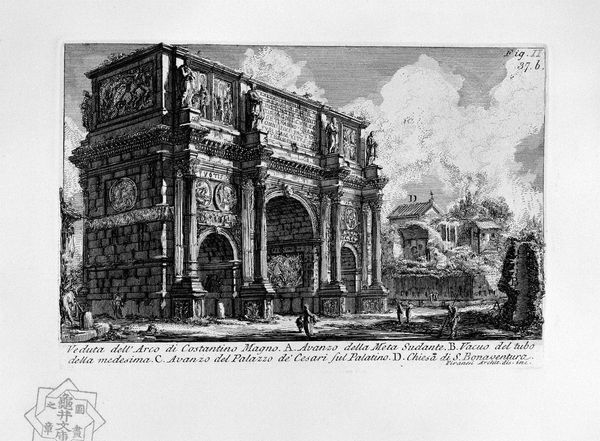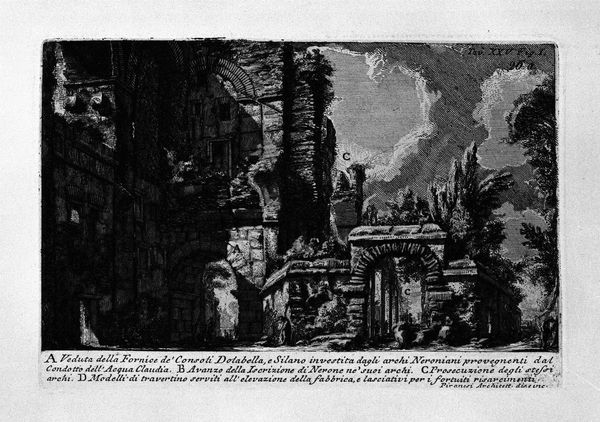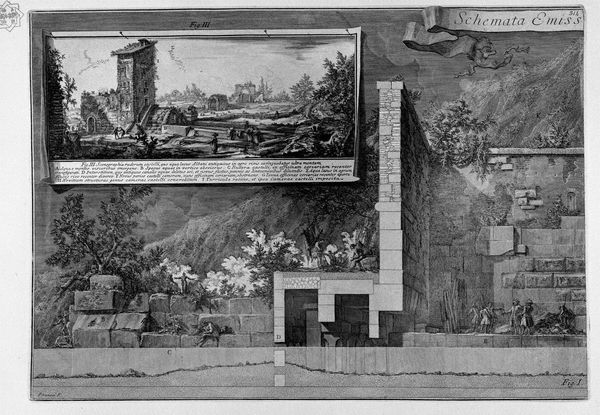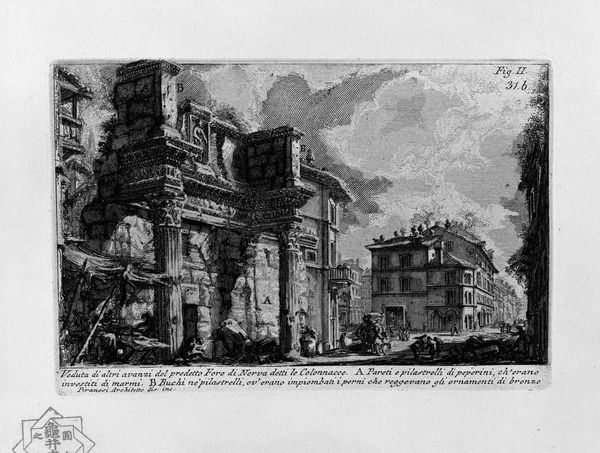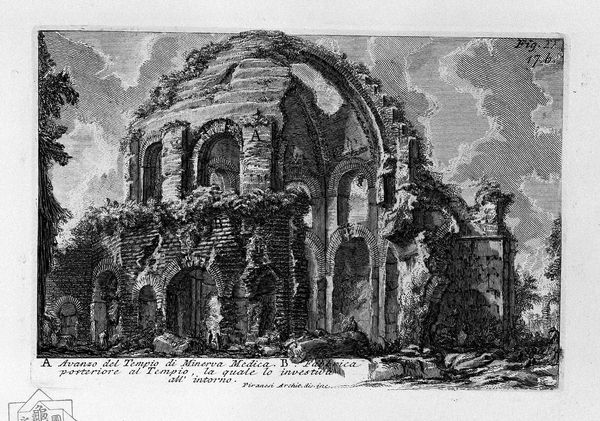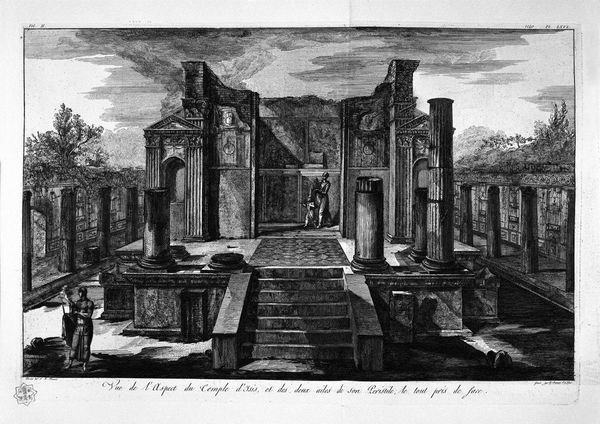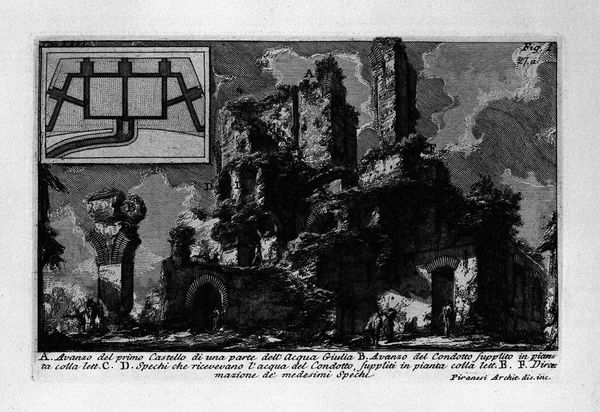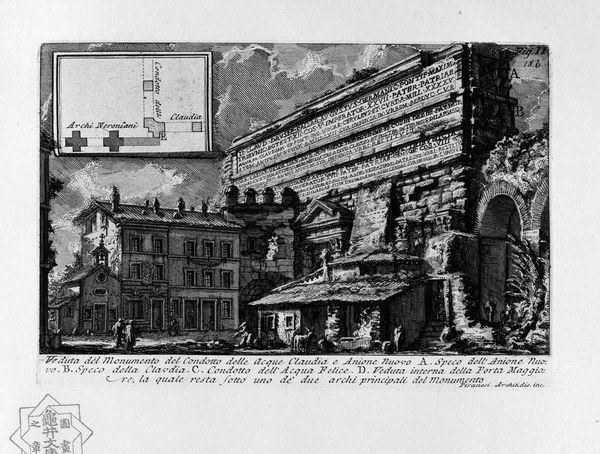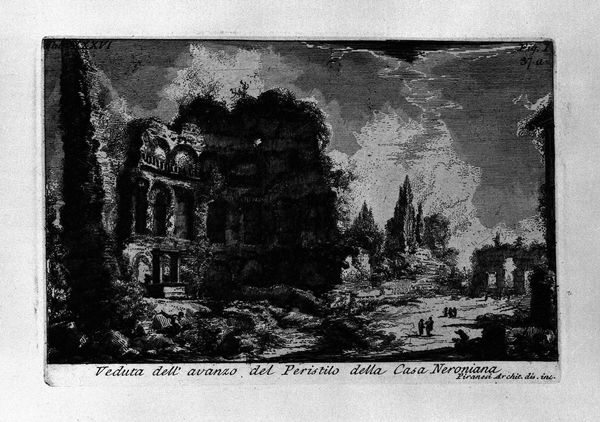
The Roman antiquities, t. 1, Plate XXVIII. Baths of Diocletian. 1756
0:00
0:00
print, etching, engraving, architecture
# print
#
etching
#
pencil sketch
#
landscape
#
holy-places
#
house
#
romanesque
#
sketchwork
#
pen-ink sketch
#
cityscape
#
history-painting
#
engraving
#
architecture
#
building
Copyright: Public domain
This etching of the Baths of Diocletian was made by Giovanni Battista Piranesi in the 18th century, using the traditional printmaking process of etching. The image is created by incising lines into a metal plate, inking it, and then pressing it onto paper. Here, the physical qualities of the lines, their depth and density, are especially important, as Piranesi uses them to convey the massiveness of the ancient ruins. Etching allowed him to create incredibly intricate detail, seen in the crumbling brickwork and monumental scale. The deep shadows and stark contrasts evoke a sense of drama and decay, emphasizing the passage of time and the eventual fate of even the grandest structures. Piranesi wasn't just documenting these ruins; he was actively shaping their cultural significance. His prints, widely circulated, romanticized the past and fueled a growing interest in classical antiquity. They also participated in a booming art market, connecting the skilled labor of the printmaker with the desires of collectors. By carefully manipulating his materials, Piranesi crafted a lasting vision of Rome's imperial grandeur.
Comments
No comments
Be the first to comment and join the conversation on the ultimate creative platform.
